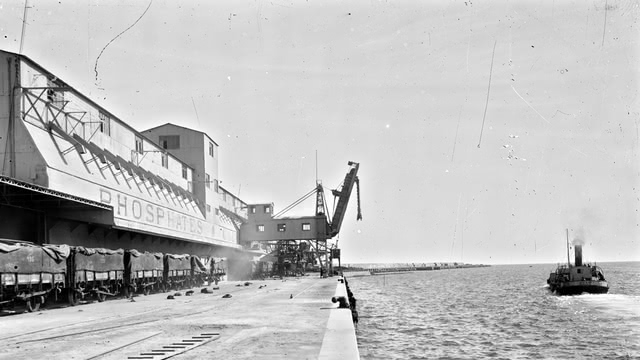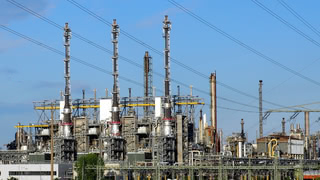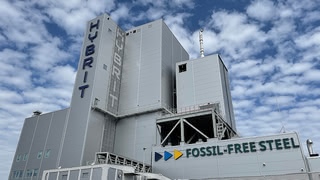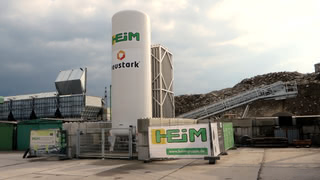This Hydrogen has no Color
Peregrine Hydrogen has an unusual idea for making clean Hydrogen, one that it says fits into existing industrial processes. One of the world's largest Phosphate mining companies is interested.

The Hydrogen hype has not lived up to its expectations. It is clear these days that clean Hydrogen will not come as fast, as cheap, and as plentiful as many have hoped a few years ago.
Yet, while many ideas about the widespread production and use of Hydrogen were misguided, there is still a need for clean Hydrogen. Even just replacing existing fossil Hydrogen in industries that already use it, like the production of fertilizers, is a massive undertaking.
Green Hydrogen, made from water with green electricity, is still only produced in minuscule quantities. Blue Hydrogen, made from fossil fuels but with Carbon Capture and Storage (CCS), is sometimes pitched as an easier and more readily available alternative. Yet, it comes with questions about Methane upstream emission and the viability of high CO₂ capture rates. Major blue Hydrogen projects have also been canceled lately.
More exotic contenders like turquoise Hydrogen from Methane pyrolysis or natural Hydrogen from geological sources — sometimes called white Hydrogen — have their own challenges and are unlikely to fill the gap.
In these times of a bursting Hydrogen bubble, it seems like a good idea to look for new ideas that may provide an easier path to decarbonize major emitters like Ammonia production.
Peregrine Hydrogen is a relatively young startup that thinks it has such an idea. The company was founded in 2023, and I recently talked with their CEO, Friðrik Lárusson.
Making green Hydrogen with electrolysis involves splitting water molecules into Hydrogen and Oxygen, a process that requires a lot of electricity. Peregrine's process also utilizes electrolysis, but in a different way. It adds an additional input — Sulfur Dioxide — and produces an additional output — Sulfuric Acid. (For the chemistry nerds, the reaction formula is SO₂ + 2H₂O -> H₂ + H₂SO₄.)
This process comes with two advantages. It requires less electricity than conventional water electrolysis. While conventional water electrolysis requires around 50 kilowatt hours per kilogram of Hydrogen, Peregrine says their process cuts this roughly in half. Sulfur Dioxide adds additional energy that the process can utilize. Furthermore, Sulfuric Acid, the additional output of this process, is itself a valuable product.
Making two products for an industry that needs both
Yet, the key idea is not just that the process makes two products at once and requires less energy. Peregrine says that there is an industry that needs both at the same location, and that is a perfect fit for their technology: Phosphate mines.
Phosphate fertilizer production starts by treating Phosphate rock with Sulfuric Acid, the co-product from Peregrine's Hydrogen process.
Today, these Phosphate mines usually receive Sulfur from external sources. In a first step, it is converted into Sulfur Dioxide, essentially in a power plant burning Sulfur. In a second step, Sulfur Dioxide is converted into Sulfuric Acid. Both steps generate energy, which is often already utilized. (Sulfur itself is often made as a by-product from fossil fuels, and there is a need for post-fossil alternatives, but that is a topic for another time.)
Ammonium Phosphate, often produced near Phosphate mining sites, is an important product in the fertilizer industry, and its production involves Ammonia. And Ammonia production is the largest consumer of Hydrogen.
Peregrine's idea is to replace the traditional Sulfuric Acid plants with their process. It serves the same role of converting Sulfur Dioxide into Sulfuric Acid, but in addition, it produces Hydrogen. That can be used to make Ammonia on-site for Ammonium Phosphate production.
Friðrik Lárusson from Peregrine says this makes it attractive for Phosphate producers: "Their Phosphate mines are generally not co-located with natural gas. Therefore, it is quite a benefit to have on-site production of Hydrogen."
Of course, one cannot cheat thermodynamics. By utilizing the energy content of Sulfur Dioxide, that process step is no longer an energy source that can be utilized. The first step, however, burning Sulfur to make Sulfur Dioxide, remains unchanged and is still an energy source.
Letter of Intent with Phosphate Mining Company OCP
One of the largest Phosphate producers appears interested in what Peregrine has to offer. One of Peregrine's investors is a fund called Bidra. It is backed by OCP, one of the world's largest Phosphate producers. It operates several Phosphate mines in Morocco.
Recently, Peregrine has announced a letter of intent it signed with OCP "to secure scale-up funding and offtake for its Hydrogen technology."
Peregrine Hydrogen's process is still in early stages. Scaling a process that works in the lab to an industrial setting is challenging. A letter of intent is not an investment decision. Yet, Peregrine's concept is an interesting idea that takes some of the challenges of Hydrogen into account.
The success of Hydrogen is not just hampered by the lack of cheap, clean Hydrogen. A major challenge is that Hydrogen is rather difficult to transport. Making Hydrogen close to where it is needed makes sense. It is also how most of the existing fossil Hydrogen industry operates. Most Hydrogen is never transported over long distances. Looking for ways to make clean Hydrogen where it's needed is, therefore, obviously a good idea.
Peregrine's process requires specific conditions for its success: a source of Sulfur Dioxide, an offtaker for both Hydrogen and Sulfuric Acid, ideally all at the same location. Phosphate mining is one option, but Peregrine sees other uses beyond the Phosphate industry. Their recent press release cites Friðrik Lárusson with the words: "We're excited to share what we're working on in the metals, oil, and natural gas industries. Stay tuned." (For obvious reasons, one may have reservations about the latter two.)
It is probably not the technology that people who are hoping for a widespread use of Hydrogen, a Hydrogen Economy, are looking for. But even just decarbonizing a large chunk of Ammonia production in the Phosphate industry is a worthy goal.
Author: Hanno Böck
Brief
-
Organized by Zero Waste Europe, various organizations have published an open letter calling for a moratorium on new waste incineration in the EU.
-
The oil company Occidental Petroleum, owner of the Direct Air Capture companies Carbon Engineering and Holocene, has previously suggested that a combination of Enhanced Oil Recovery and Direct Air Capture could enable "Net-Zero Oil". According to a recently published scientific paper, it is doubtful whether that is even possible: "The volume of emitted CO₂ exceeds the pore space freed for storage by at least a factor of three, making carbon-neutral oil physically unattainable in conventional reservoirs."
-
European Energy, owner of an E-Methanol plant in Kassø, Denmark, has announced plans for a combined Bio-E-Methanol process. It involves electrified Steam Methane Reforming (e-SMR) of Biomethane. Optionally, CO₂ generated in the process can be utilized with added green Hydrogen.



